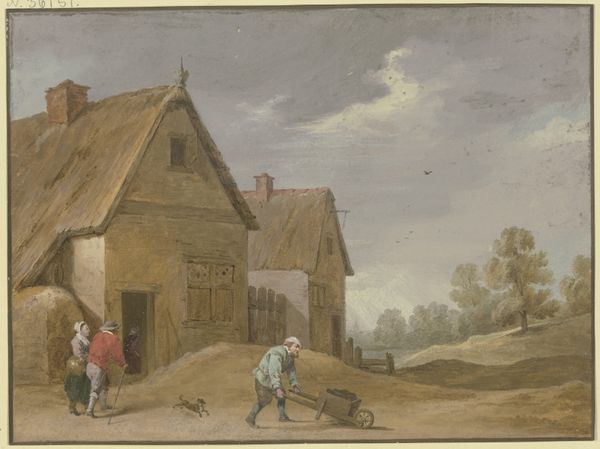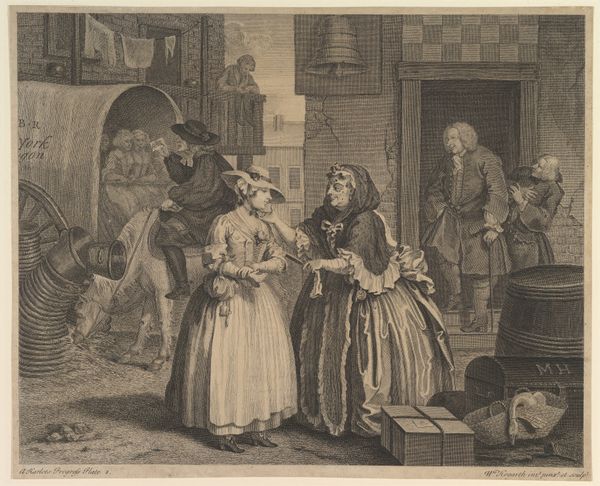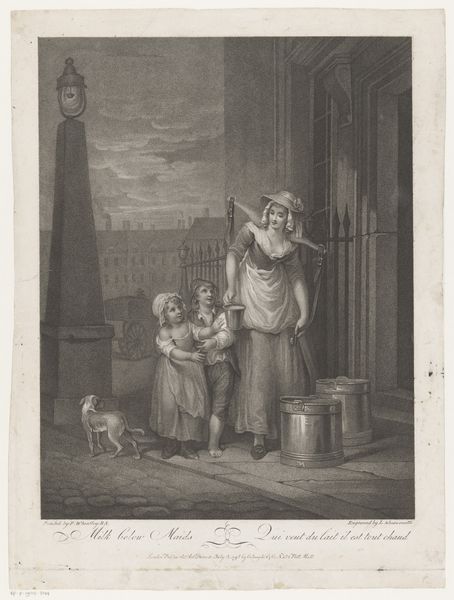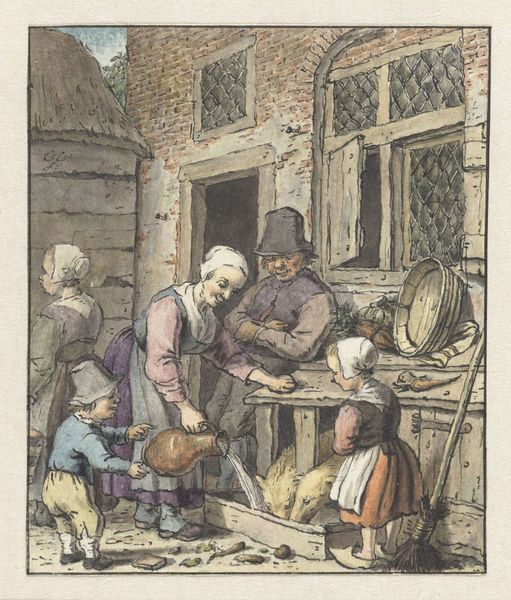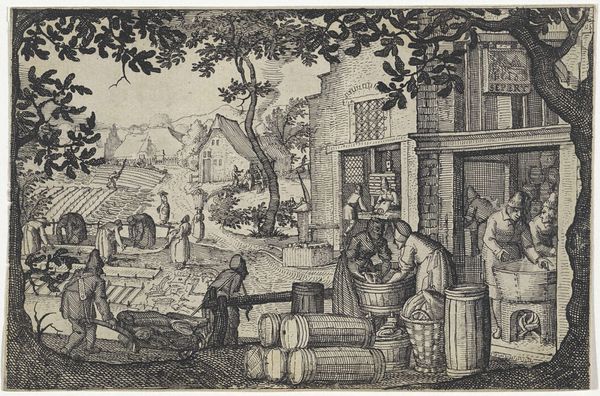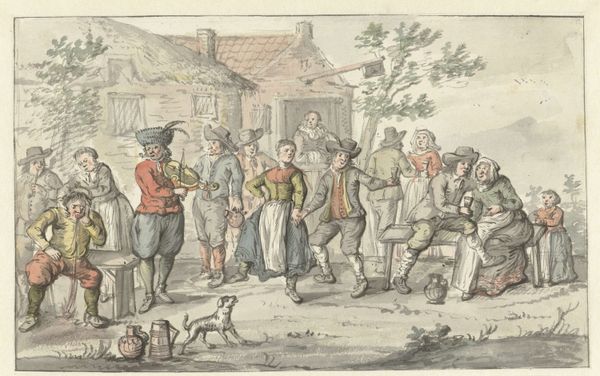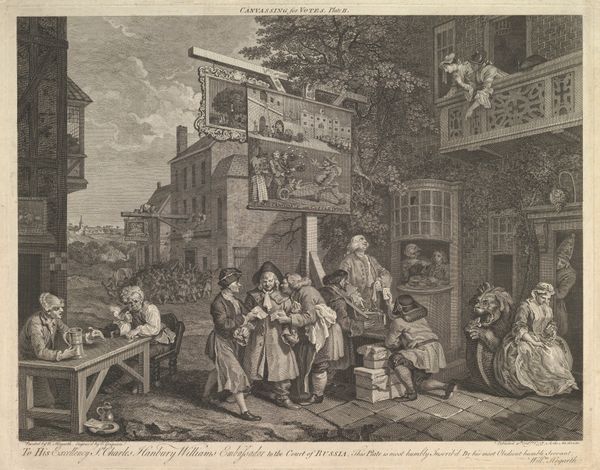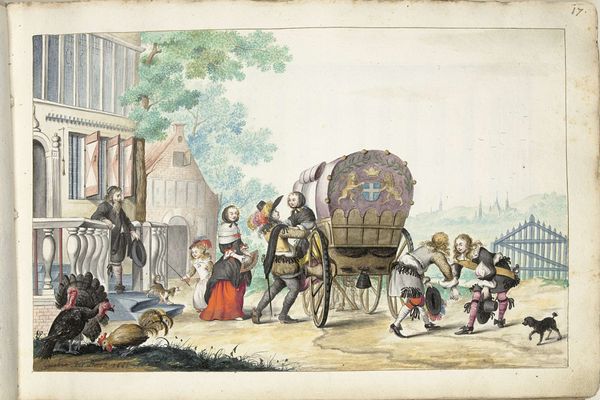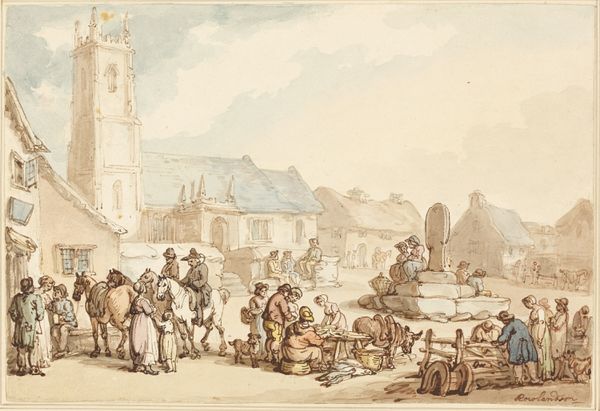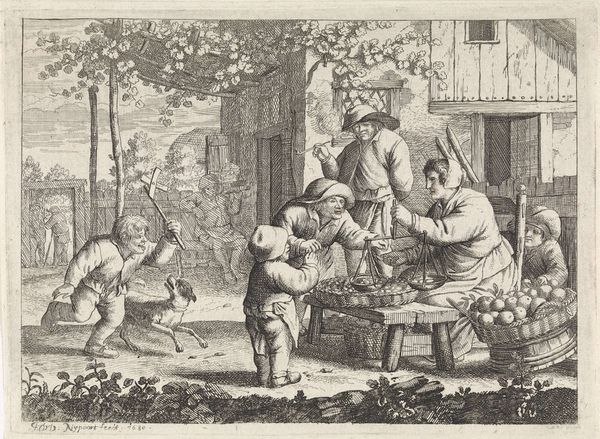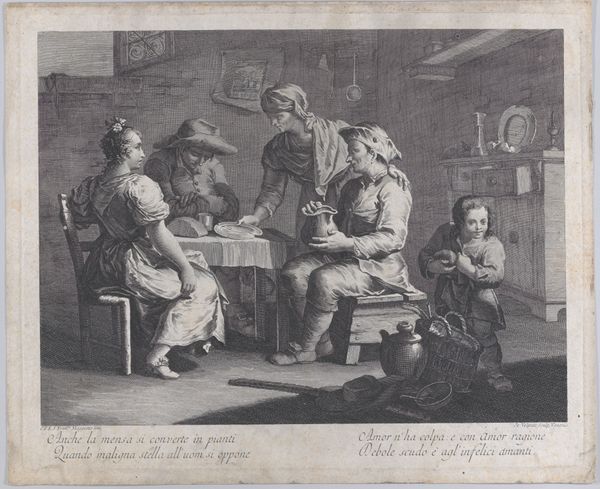
drawing, coloured-pencil, watercolor, ink, pen
#
portrait
#
drawing
#
netherlandish
#
coloured-pencil
#
dutch-golden-age
#
landscape
#
figuration
#
watercolor
#
ink
#
coloured pencil
#
pen
#
cityscape
#
genre-painting
Copyright: Public Domain
Editor: So, here we have Maria Margaretha la Fargue’s "Savoyardenknabe vor einem Hause tanzend" from 1772, created with pen, ink, watercolor, and coloured pencil. It feels almost like a snapshot of everyday life, but there's something a little melancholy about it too. What do you see in this piece? Curator: It's more than just a snapshot; it's a window into the societal structures of 18th-century Dutch life. Notice the Savoyard boy, likely an itinerant performer from a marginalized community. His presence performing for the upper-class women calls attention to the sharp divide between those who can enjoy leisurely pursuits and those forced to earn a meager living. How does the boy’s position contrast with the domestic interior of the house? Editor: Well, he’s outside, quite literally on the periphery. The women are inside a comfortable home and he is entertaining them in the courtyard. Curator: Exactly. And the almost clinical precision of the architecture contrasts with the fluid brushstrokes used for the landscape, doesn't it? This dichotomy underscores the social hierarchy where fixed structures of power and wealth observe and sometimes exploit those existing on its edges. Does this imbalance affect your emotional response to the artwork? Editor: I think so. There’s an innocence in the boy’s performance, almost naive, and it makes the dynamic feel a bit unsettling, almost exploitative. It feels like he’s performing *for* them. Curator: And the presence of the dog further highlights that dynamic of performer and audience, perhaps? These elements combined offer us insights into class, labour, and the economics of leisure, issues still relevant today. What will you take away from this discussion? Editor: I hadn't considered the social commentary so explicitly. It shows how art can capture not just a moment, but a complex web of societal relationships. Curator: Precisely, seeing beyond the surface is seeing the bigger picture, it is a powerful way of understanding the artwork and its importance beyond beauty and decoration.
Comments
No comments
Be the first to comment and join the conversation on the ultimate creative platform.

